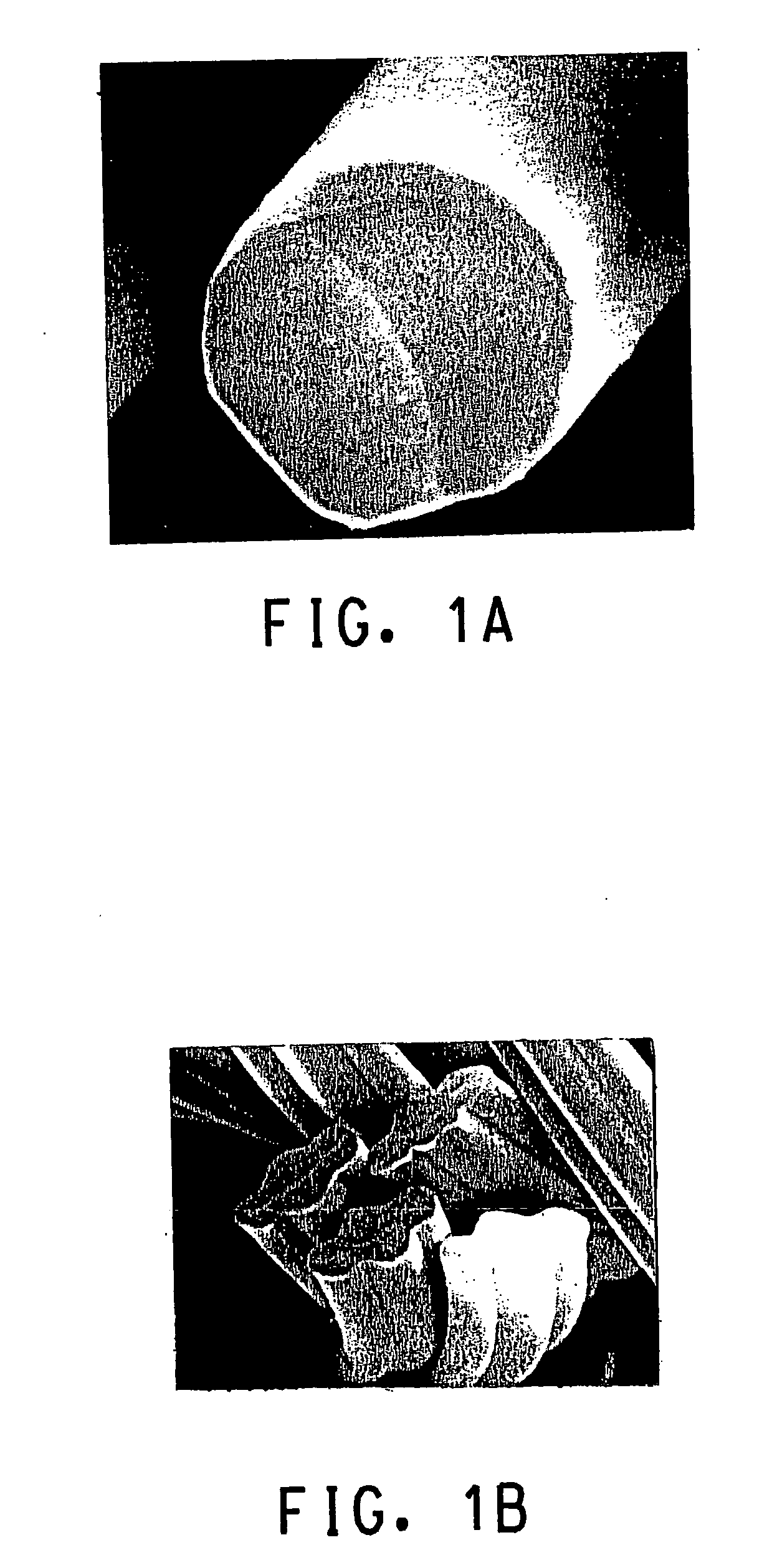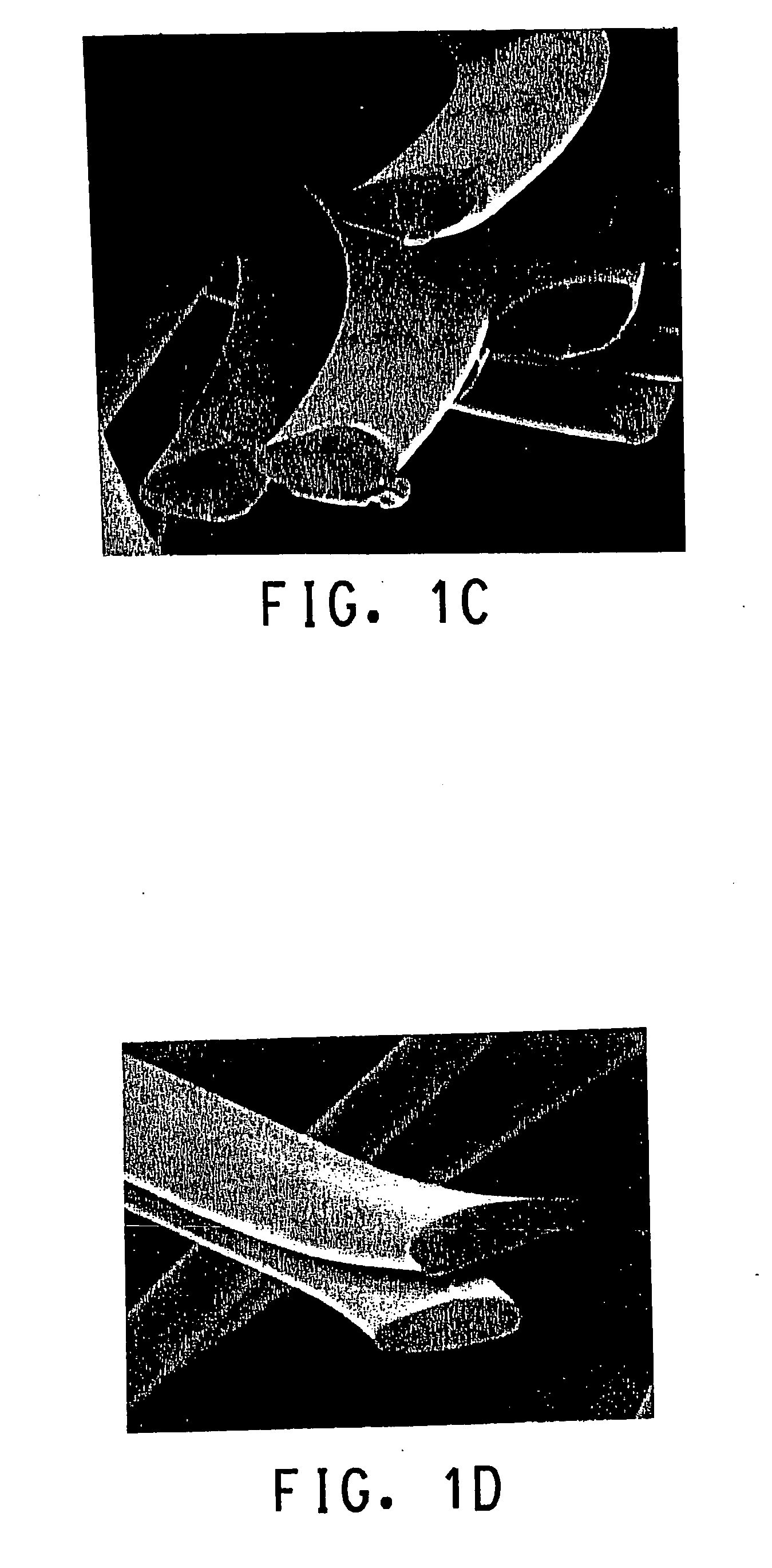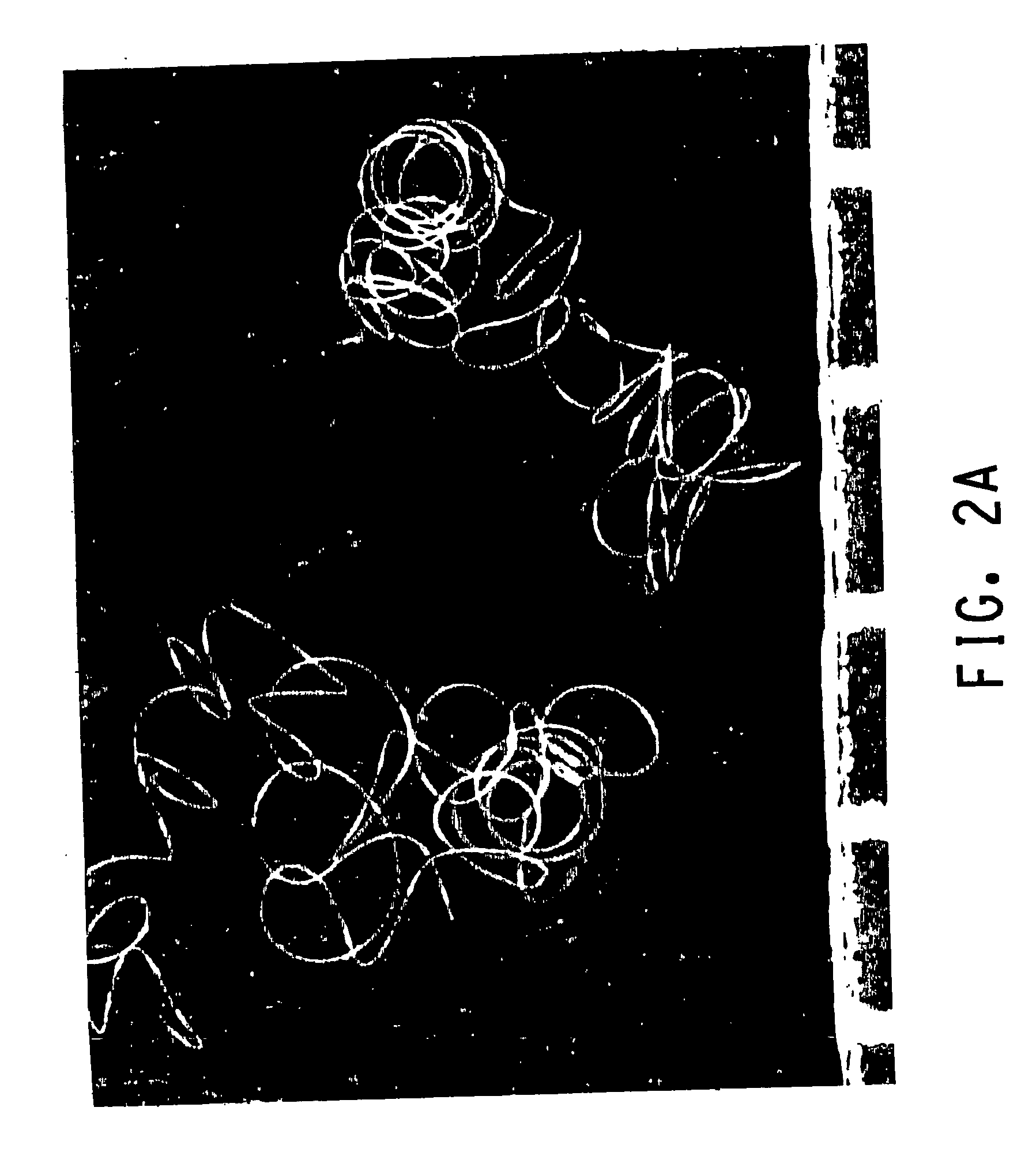Bicomponent fiber and yarn comprising such fiber
a technology of bicomponent fibers and fibers, applied in the field of polypropylene staple fibers, can solve the problems of reducing the relative percentage of these fibers, affecting the quality of yarns made from these fibers in combination with cotton, and difficulty in processing these fibers with cotton staples
- Summary
- Abstract
- Description
- Claims
- Application Information
AI Technical Summary
Benefits of technology
Problems solved by technology
Method used
Image
Examples
example 1a
[0062] Continuous bicomponent filaments of poly(ethylene terephthalate) (T211 from Intercontinental Polymers, Inc., 0.56 dl / g IV), and Sorona® brand poly(trimethylene terephthalate) (Sorona® is a registered trademark of E.I. DuPont de Nemours and Company) having an IV of 0.98 dl / g, were extruded in a 50 / 50 weight ratio from a block operated at 272° C. via metering pumps to a bicomponent spin pack provided with etched metering plates which joined the polymer streams directly above the counterbore of the spinneret capillaries. A delusterant of particulate TiO2 was added to both polymers at a level of 0.1-0.4% by weight. The polymers were spun from a 288-hole spinneret in which the capillaries were 0.38 mm in depth and had cross-sections that were 0.64 mm long modified slots, with outward-rounded bulges in the middle of each long side (maximum width 0.18 mm) and rounded ends with 0.06 mm radii. The polymer interface was substantially perpendicular to the major axis of the resulting ova...
example 1b
[0065] Polyester bicomponent staple fiber was made as described in Example 1A, with the following differences. Oval fibers of aspect ratio 3.3:1 (measured—see FIG. 1D) were spun from a 288-hole spinneret in which the capillaries were 0.38 mm in depth and had cross-sections that were 0.76 mm long modified slots, with outward-rounded bulges in the middle of each long side (maximum width 0.14 mm) and rounded ends with 0.05 mm radii. Let-down ratio was 0.942. FIG. 2C illustrates the low coiling exhibited by the fiber.
example 1c
[0066] Polyester bicomponent staple fiber was made as described in Example 1A, with the following differences. The poly(ethylene terephthalate) IV was 0.54, and the poly(trimethylene terephthalate) IV was 0.95. The fiber cross-section was oval with an aspect ratio of 2.4:1 (measured), the spin speed was 1200 m / min, the first draw ratio was 2.23, the heat-treating temperature was 170° C.
PUM
| Property | Measurement | Unit |
|---|---|---|
| shrinkage | aaaaa | aaaaa |
| shrinkage | aaaaa | aaaaa |
| shrinkage | aaaaa | aaaaa |
Abstract
Description
Claims
Application Information
 Login to View More
Login to View More - R&D
- Intellectual Property
- Life Sciences
- Materials
- Tech Scout
- Unparalleled Data Quality
- Higher Quality Content
- 60% Fewer Hallucinations
Browse by: Latest US Patents, China's latest patents, Technical Efficacy Thesaurus, Application Domain, Technology Topic, Popular Technical Reports.
© 2025 PatSnap. All rights reserved.Legal|Privacy policy|Modern Slavery Act Transparency Statement|Sitemap|About US| Contact US: help@patsnap.com



